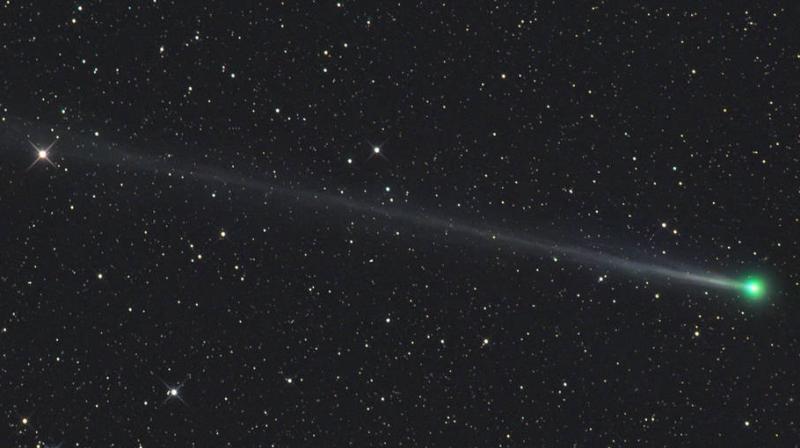Don't worry comet hunters, you still have a chance to see comet: NASA

Comet hunters still have a chance to see comet 45P/Honda-Mrkos-Pajdušáková in the next few days using binoculars or a telescope, confirmed NASA.
“It’s the first of a trio of comets that will — between now and the end of 2018 — pass close enough to Earth for backyard observers to try to spot and for scientists to study using ground-based instruments,” NASA said in a statement.
The 45P, a short-period comet will pass by the planet Earth again in 2032, however it will be much farther away– at a distance of nearly 30 million miles (about 48 million kilometers).
The 45P was discovered in 1948 with an orbit that takes it around the sun and out by Jupiter about every 5-1/4 years.
Scientists have taken advantage of 45P’s approach, making observations using powerful ground-based telescopes such as NASA’s Infrared Telescope Facility to investigate the gases, dust and ice particles that are released from the comet nucleus and show up in the coma and tail.
By looking for water, methane and other important compounds, astronomers get clues about how the comet is put together and where it originated in the cloud of material that surrounded the young sun as the solar system formed. By observing the same comet more than once, astronomers can see how the object changes over time.
“Observing a comet multiple times over successive orbits is like taking snapshots at different stages of life,” said Joseph Nuth, a senior scientist at NASA’s Goddard Space Flight Center in Greenbelt, Maryland. “And some comets have harder lives than others, depending on how close they get to the sun. We can learn about these effects by comparing different comets with varying perihelion distances over time.”
Ground-based observations also are planned for comet 41P/Tuttle-Giacobini-Kresak, which will pass closest to Earth on April 1, 2017, and for comet 46P/Wirtanen, passing closest to Earth on Dec. 16, 2018. By studying this trio of comets, astronomers can learn more about the differences among comets – information they use to fill in the comet family tree.
“Comet 46P in particular will remain within 10 million miles of Earth for several weeks, from December 4 through 28, 2018,” said Goddard researcher Michael DiSanti. “This will permit detailed studies of its material, as successive regions of the comet’s nucleus become exposed to sunlight.”
The recommendation for backyard astronomers is to use binoculars or a telescope to look for the comet several times during the coming days, NASA said.
—inputs from NASA.

